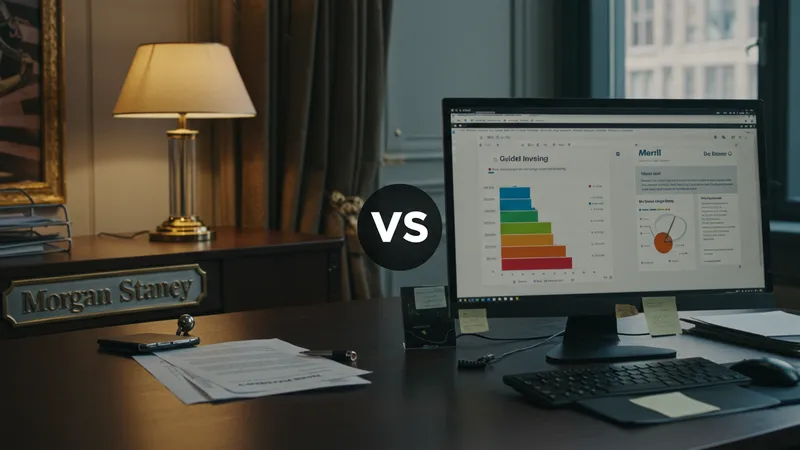

Portfolio Management Services (PMS) in the United States are designed to expertly oversee and grow investors' assets, but the structure of their fee models often surprises even experienced market participants. Instead of a one-size-fits-all approach, PMS providers offer an array of fee structures that directly impact both the client experience and potential returns. Understanding these fee models is essential because the subtle differences between them can lead to significant variations in long-term performance.
At the heart of how PMS fee structures are set up lies the principle of aligning incentives between the manager and the client. Service providers might structure their charges based on assets under management (AUM), performance, or a blend of both with layered nuances. Each method reflects not just the cost, but the relationship and interests shared by the investor and the portfolio manager. This complexity is further shaped by U.S. regulations to ensure transparency and protect clients, all while maintaining competitive edges across the financial industry.

The AUM-based fee is the most straightforward in U.S. portfolio management services. With this structure, investors pay a fixed percentage—typically ranging from 1% to 2.5% annually—based on the total assets that the manager oversees. Firms such as Morgan Stanley often use this approach, giving investors predictable yearly costs regardless of market performance. This method is widely adopted for its clarity and ease of calculation, but it may not directly motivate managers to outperform market benchmarks.
Some U.S. portfolio managers adopt performance-based fees in addition to or instead of AUM fees. For example, a portfolio provider may charge a lower AUM fee and add a performance incentive—commonly around 10% to 20% of returns above a specific benchmark. This approach seeks to more closely align the manager’s incentives with the investor’s success, though it can lead to higher fees in periods of strong market performance. Regulations around these models are strict in the United States to safeguard investor interests and ensure ethical standards.
Tiers and blended fee models are increasingly popular in the U.S. For instance, Merrill’s tiered pricing lowers the AUM percentage as the managed assets grow, while some services combine both AUM and performance fees to appeal to a broader range of client preferences. These structures can benefit larger portfolios by reducing average effective costs, making high-quality portfolio management accessible to more investors.
Transparency remains a cornerstone of fee structures for PMS in the United States. Providers like Fidelity emphasize up-front disclosure of all costs, minimizing the impact of hidden charges and ensuring compliance with U.S. fiduciary standards. A clear understanding of the fee model gives clients greater confidence and better control over their investment journey, making portfolio management more approachable and trustworthy.
While the basics are clear, the nuances of PMS fee structures create a landscape full of valuable strategies and important trade-offs. The deeper details reveal even more valuable insights ahead, from the implications for different investor profiles to recent regulatory impacts and industry trends.
Understanding the categories of fee structures in U.S. portfolio management is crucial for making the most informed choice. Most traditional services use purely asset-based pricing, charging an annual percentage of the investor's AUM. This allows investors to easily predict annual costs and makes fee comparisons straightforward. However, the industry has seen a rise in alternative structures to better suit diverse client goals and market conditions.

Performance-based and blended fee arrangements are gaining traction. In a performance-based model, fees depend on the manager’s ability to surpass a predefined benchmark. For instance, if Morgan Stanley’s managed portfolio exceeds the S&P 500, a percentage of those excess gains—commonly 10–20%—is shared as an additional fee. These arrangements require both detailed disclosures and careful structuring to comply with U.S. regulations.
Tiered fee models reward investors with larger portfolios by reducing the management percentage as invested assets increase. Both Merrill and Fidelity employ such structures, providing incentives for clients to grow their investments within a single firm. This creates a more dynamic relationship, as clients often benefit from lower costs as their portfolios reach milestone values.
In the United States, regulatory oversight from the SEC requires advisors to communicate fee structures with absolute clarity. Many providers now feature fee calculators and transparent schedules on their websites. This high level of clarity guards client interests and helps them weigh value versus expense when choosing between providers.
Morgan Stanley Portfolio Management typically commands premium pricing, reflecting its reputation and comprehensive service offerings. For private wealth management clients, average AUM fees of 1.5–2.5% per year can be expected, occasionally coupled with a performance fee if investment returns surpass certain thresholds. The brand’s prestige enables it to attract clients willing to pay more for hands-on expertise, deep research, and tailored solutions.

Merrill Guided Investing with Advisor takes a slightly different route with its fee structure. By employing tiered AUM fees starting at approximately 1.35% and decreasing for higher asset brackets, Merrill aims to retain clients as their investments grow. This model appeals to individuals starting with moderate balances, as costs become more competitive as portfolio size climbs. Clients appreciate the visibility of where they stand within the pricing tiers.
Fidelity Portfolio Advisory Services highlights accessibility through lower AUM fees—generally 0.50–1.50%—with a focus on transparency and advisory flexibility. Though it does not use performance fees, Fidelity’s flat percentage is attractive to those seeking advice from a well-established institution. For investors prioritizing cost efficiency, especially at lower portfolio thresholds, Fidelity’s model may prove appealing.
When comparing these three, U.S. investors must evaluate not just absolute fee rates but supplemental features, minimum account size requirements, and included research or support services. Each provider’s fee schedule reflects its unique strengths, so thorough research is key to finding the optimal fit.
One of the defining features of the American investment landscape is its strict focus on transparent fee disclosure. The SEC and FINRA have established comprehensive rules, requiring portfolio managers to present clear, itemized information about every component of their fee arrangements. This includes base AUM percentages, performance fees, transaction charges, and ancillary costs, all clearly outlined.

Clients receive a mandatory “Form ADV” that spells out not just what is charged, but also when and how, ensuring few surprises down the road. For example, Fidelity provides an online fee schedule accessible to all account holders, while Morgan Stanley offers detailed documentation during advisory meetings. This culture of openness gives investors greater confidence when entrusting their assets to portfolio managers.
Regulatory enforcement has increased in recent years, given the evolving complexity of financial products in the U.S. As such, investors benefit from regular audits and standardized reports, ensuring that what’s disclosed matches what’s ultimately billed. If discrepancies arise, regulators are quick to intervene, with substantial penalties possible for noncompliance.
This atmosphere of rigorous oversight means that U.S. portfolio management clients enjoy some of the highest standards of fairness and protection worldwide. However, it also places responsibility on investors to read disclosures carefully and ask questions about any part of the arrangement that seems ambiguous or unusual.
When selecting a portfolio management provider, U.S. investors need to look beyond headline fees and analyze the interplay between cost and value. While a lower AUM fee from one firm such as Fidelity may seem immediately attractive, it’s important to consider the breadth of investment strategies, client support, and educational resources provided within that fee structure.

The client’s individual investment goals also play a major role. For long-term investors seeking outperformance, a performance-based model from a provider like Morgan Stanley could yield benefits—so long as the additional fees don’t unduly erode returns during strong years. Conversely, those favoring predictability may gravitate toward the steadier costs of AUM-only services or those with clear tiered structures.
It’s important not to overlook service features bundled into the pricing. Some providers offer robust tax-loss harvesting, regular strategy reviews, or access to exclusive market research, which can add significant non-monetary value. Carefully integrating these features into fee comparisons ensures a comprehensive assessment.
The landscape of portfolio management fee structures in the United States is dynamic and client-focused, designed to ensure that individual needs, regulatory standards, and investment expertise remain balanced. By understanding these models in detail and matching them to personal priorities, investors can maximize both transparency and the long-term growth potential of their managed assets.